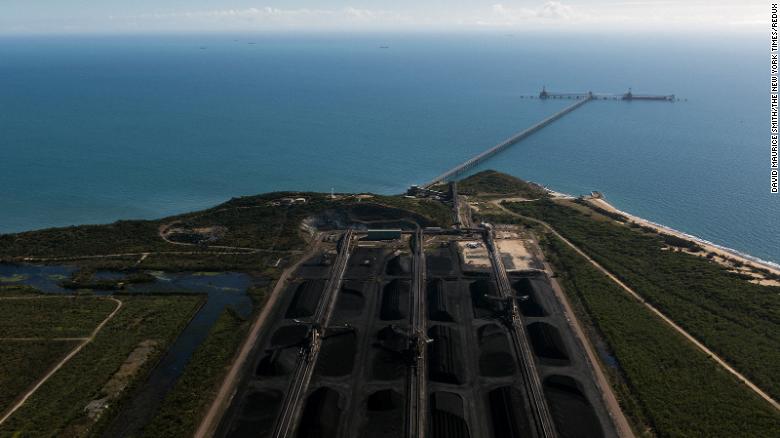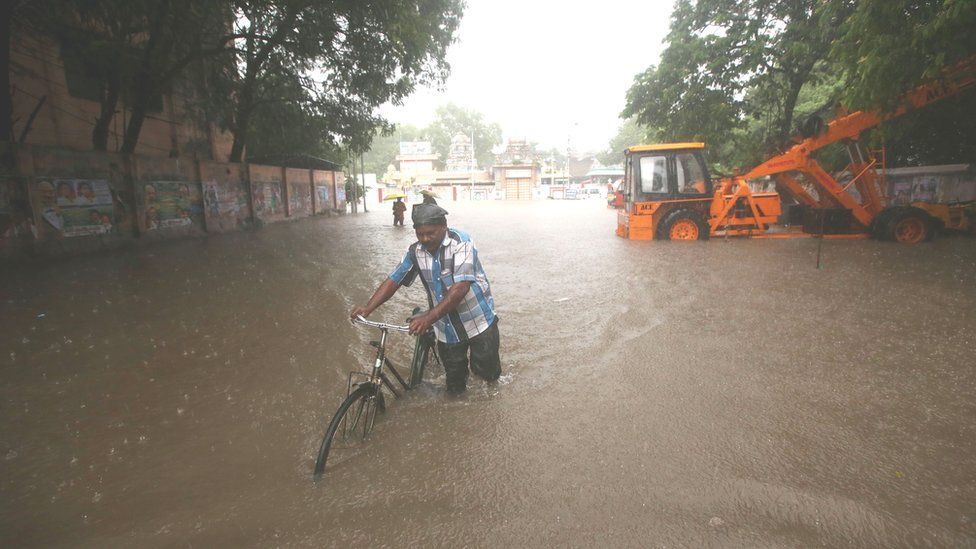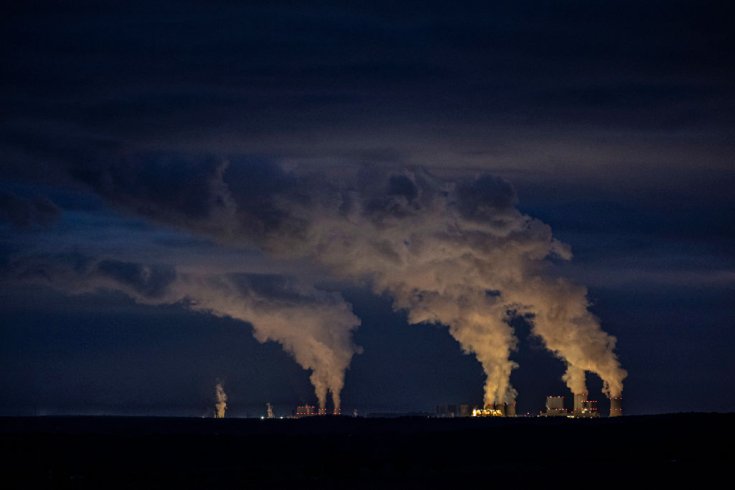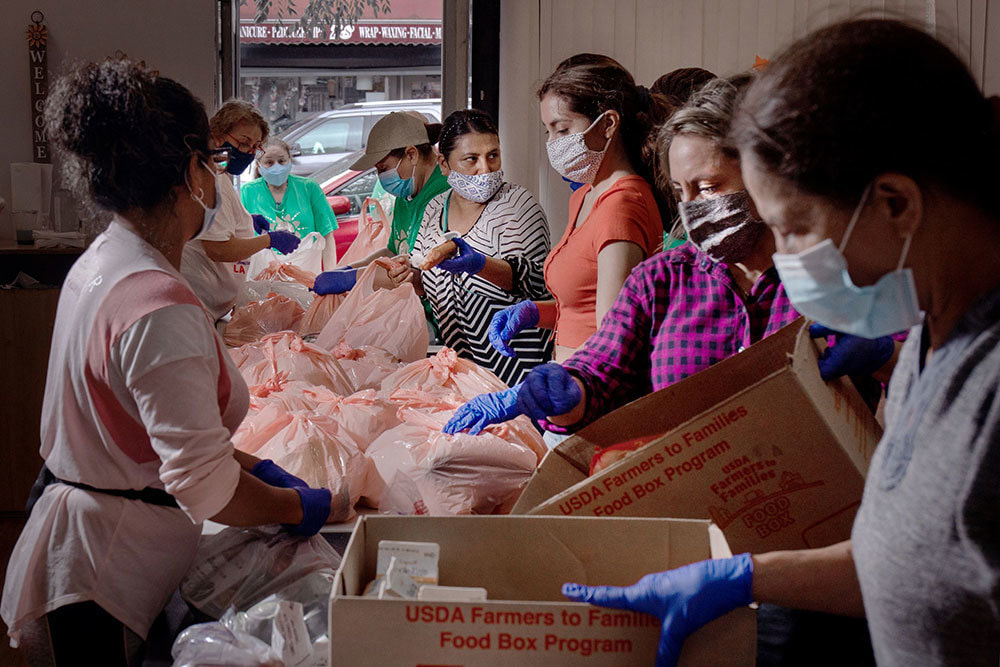|
IRVINE, Calif. (March 31, 2021) – Recognizing the constructive elements of conservation, efficiency, recycling and watershed management included in the Biden administration’s initial infrastructure proposal, a national coalition of over 200 agricultural organizations and urban and rural water districts said today it would urge the federal government to further bolster investment in the nation’s aging water facilities.
In January, the coalition called on the administration and congressional leaders to invest in a diversified water management portfolio that enhances water supply and quality for urban and environmental uses, while keeping water flowing to Western farms and rural communities. While the details of the plan are still forthcoming, the coalition said it looks forward to working with the administration and Congress on the larger need for Western water infrastructure, such as above- and below-ground water storage facilities, conveyance and desalination, along with federal financing mechanisms for such water projects. With Western states facing another drought and their importance in supplying much of the nation’s food supply, the coalition said it is even more critical to recognize the need for rural water infrastructure investments to capture and store water for use when it is needed most. “To ensure that food can continue to be safely and affordably produced in the West, and that rural communities continue to have access to the water critical to their economies, it is important that water supply investment be included as a necessary component of a national infrastructure package,” California Farm Bureau President Jamie Johansson said. “We will continue to work with Congressional leaders to build on the administration proposal with enhanced funding for water infrastructure.” “Decades of neglect have rendered our federal water projects unable to meet the human and environmental needs of the West,” Western Growers President and CEO Dave Puglia said. “While highways and bridges are front and center in the administration’s proposal, federal investments in water storage and conveyance would present an opportunity to strengthen our farming and rural communities while providing good-paying jobs and an economic boon for the construction industry.” “The severe drought punishing much of the West only emphasizes the need to plan now for future droughts and provide the funding needed to not only fix, but to ‘build back better’ the national system responsible for delivering water to homes, businesses, farms and the environment,” Family Farm Alliance Executive Director Dan Keppen said. “Appropriate investments in water infrastructure will assure that underserved rural communities throughout the nation have access to clean, reliable water,” Association of California Water Agencies Director of Federal Relations David Reynolds said. “Water infrastructure funding can help the nation adjust to climate change, better protect the environment and help ensure safe, abundant, local food supplies.” “The Biden administration has put its opening hand in the infrastructure debate on the table,” National Water Resources Association President Christine Arbogast said. “We look forward to additional details and discussion on the Western water and rural water elements specifically mentioned in the President’s Build Back Better proposal. Infrastructure needs in the West are different from other regions of the country, and they deserve the attention and investment which will come from the vigorous debate which will now begin in earnest. We look forward to working with the administration and Congress on this critical effort.” The coalition includes organizations from 15 states that collectively represent $120 billion in agricultural production, nearly one-third of all agricultural production in the country, and tens of millions of urban and rural water users. About Association of California Water Agencies: The Association of California Water Agencies (ACWA) is a statewide association of public agencies whose more than 450 members are responsible for about 90% of the water delivered in California. For more than a century, ACWA’s mission has been clear: to help members promote the development, management and use of good quality water at the lowest practical cost and in an environmentally responsible manner. About California Farm Bureau: The California Farm Bureau works to protect family farms and ranches on behalf of nearly 32,000 members statewide and as part of a nationwide network of more than 5.5 million Farm Bureau members. About Family Farm Alliance: The Family Farm Alliance is a powerful advocate for family farmers, ranchers, irrigation districts, and allied industries in seventeen Western states. The Alliance is focused on one mission - To ensure the availability of reliable, affordable irrigation water supplies to Western farmers and ranchers. About National Water Resources Association: National Water Resources Association advocates federal policies, legislation, and regulations promoting protection, management, development, and beneficial use of water resources. The association is dedicated to achieving sustainable water supply for all beneficial uses in an economical and environmentally responsible manner. About Western Growers: Founded in 1926, Western Growers represents local and regional family farmers growing fresh produce in Arizona, California, Colorado and New Mexico. Our members and their workers provide over half the nation's fresh fruits, vegetables and tree nuts, including nearly half of America's fresh organic produce. Some members also farm throughout the U.S. and in other countries so people have year-round access to nutritious food. For generations, we have provided variety and healthy choices to consumers. Connect with and learn more about Western Growers on our Twitter and Facebook. ### Documentary Highlights Direct Catastrophic Effect of Climate Crisis & Water Scarcity Los Angeles, CA, Feb. 23, 2021 --- The Chronicles Group (TCG), a multimedia non-profit organization, announced that its latest documentary, “Beyond the Brink: California’s Watershed,” will be airing on New Orleans’ WLAE and WLAE DT2, starting at 7:30pm on Feb 26th on WLAE. Full listings for WLAE stations are below. All times Eastern. The documentary is produced and directed by writer/producer Jim Thebaut. The film is also available to watch anytime on YouTube or Vimeo.
The documentary shows the effect the climate crisis has had on the health of California’s forested watersheds and the resulting devastation. Through expert interviews, powerful imagery, and open-sourced journalism, Thebaut warns that there is little time to repair the damage. Without the reserves, the snowbanks in the Sierra Nevada Mountains provide, California is doomed to an evolving intensity of drought conditions, water scarcity and an increase in uncontainable forest fires. This rapidly evolving demise of California’s Watershed is a microcosm of the global consequences of the climate crisis. As global shortages of water – and its resulting shortage of food and energy – become apparent, the critical ramifications on the social fabric and our national security become obvious. As the documentary states, developing scientific and technological solutions must be an immediate priority. Furthermore, the debate over anthropomorphic warming is over. Steps need to be taken to reduce man made greenhouse gases before the world is set on fire. “We are seeing the results of the climate crisis as it visibly, measurably impacts our water supply and by extension the forests that so depend on reliable year-round water,” said Jim Thebaut. “While the world is facing unprecedented crises combating a global pandemic, the overarching issues of climate on humanity’s future can’t be overlooked or forgotten.” “Beyond the Brink: California’s Watershed”, is the latest in TCG’s series of documentaries dealing with public policy and national security issues. These include: “Running Dry” (2005), “The American Southwest: Are We Running Dry?” (2008) and “Beyond the Brink” (2017). “Running Dry” was the foundation and genesis for the 2005 Senator Paul Simon Water for the Poor Act and 2014 Water for the World Act. Thebaut is currently filming “California’s Watershed: Healing” and is in pre-production on “Turning Back the Doomsday Clock.” WLAE: 2/26 7:30pm, 2/28 10:00pm WLAE DT2: 2/26 11:30pm, 3/1 2:00pm About Jim Thebaut Throughout his career, Jim Thebaut has written, produced and directed an array of prominent, socially significant productions, including his 1992 Cable Ace Award-nominated America Undercover documentary for HBO, “The Iceman Tapes - Conversations with a Killer.” He has also produced A&E’s “Bad Cops” and “Execution at Midnight.” Thebaut was the executive producer for the CBS television dramatic special “A Deadly Business,” which exposed organized crime's involvement in the toxic waste business. He also directed/produced the documentary for Public Television, “The Cold War and Beyond,” which explored the Cold War brinksmanship between the U.S. and the Soviet Union. Prior to Thebaut's film career, he was a Regional Environmental Planner and responsible for numerous Environmental Impact Statements, Energy and Environmental Planning studies in Washington State, Idaho, Oregon, and Alaska. Thebaut holds degrees from the University of Washington, San Francisco State University and UCLA. About The Chronicles Group The Chronicles Group is a not-for-profit 501(c)(3) corporation focusing on educating the public through media about profound issues that affect both human and ecological systems. Through their experience in producing documentary films that address subjects ranging from the Cold War to water resources, The Chronicles Group has a proven record of accomplishment in message communications, public engagement and environmental planning. For more information go to https://www.beyondthebrink.global/ Robert J. Bowman, SupplyChainBrain
James Thebaut, president of The Chronicles Group, stresses the need for immediate action by the U.S. on global climate change — but does the country still have credibility on an international stage? “We’re evolving into a whole new era on the planet,” says Thebaut. “Hopefully, the new administration will recognize these realities.” The Trump Administration failed to do so, he adds, with government-employed climate scientists forced to use “weasel words” in their reports in order to avoid specific mention of “climate change” or “global warming.” The climate crisis “transcends political ideology,” he says. Having withdrawn from the Paris Accords under President Trump, the United States’ credibility as an advocate of action on the environment is “shaky,” Thebaut says, underscoring the importance of international cooperation toward mitigating the impacts of climate change. Large countries with big populations, such as China and India, face a particular challenge in that regard. Whether the U.S. can regain its leading role in promoting efforts to improve the environment remains to be seen. “The past is the past,” he says. “We have a new administration and focus, and that’s where we’re going to be.” There’s a critical need for both new technologies and revamped infrastructure around the world, he says. Government environmental policies, such as the fire-suppression program that has rendered California’s forests so vulnerable to catastrophic wildfires, must be reexamined. Existing watersheds aren’t sufficient to handle disasters on the scale of the state’s recent spate of fires. Supply chains, which emit huge volumes of carbon and other pollutants, also must be reimagined on a global scale. “We design on a piecemeal basis,” Thebaut says. “We don’t think about the bigger picture. We have to plan to rebuild the world, the whole infrastructure.” See full article and interview here -From American Scientific, By Walter Immerzeel
The nights are long inside a tent 5,300 meters above sea level at the snout of Nepal’s Yala Glacier. At 8:00 P.M., after a meal of Nepali dal bhat (lentils and rice), the 10 members of our expedition take refuge against the cold in sleeping bags inside the small tents that make up our temporary camp. Falling asleep is tough because the low oxygen concentration fools our bodies into increasing their heart rates. As a consequence, I spend many overnight hours listening to distant sounds of thundering avalanches and cracking ice, contemplating whether to leave the sleeping bag to pee outside and what not to forget the next day. As soon as the sun rises, the camp is bustling, and we are on our way up the steep glacier to install special instruments at 5,600 meters. Our team, which includes colleagues from the International Center for Integrated Mountain Development in Nepal, has been conducting field expeditions biannually in this place, called the Langtang catchment, since 2012. We have erected automated weather stations at the base camp and at higher elevations that measure precipitation, snow depth, radiation, temperature, relative humidity and wind, making Langtang one of the best-monitored high-altitude catchments in Asia. We need to visit the stations every six months to maintain the instruments and to download their data; there is no cellular network to transmit readings automatically, and the mountains tend to block satellite signals. On the current ascent we will mount new sensors on a metal frame three meters high that we will drill into the ice. The sensors will measure sublimation—the phase transition of ice directly to water vapor—by sampling temperature and vapor 10 times a second. (CNN)Deep in northeast Australia's outback, underneath grassy eucalypt woodlands and vast grazing lands scattered with cattle stations, lies one of the world's largest known untapped coal reserves.
Queensland's Galilee Basin, an area roughly the size of Britain, is set to produce its first coal in 2021, to be moved by rail 300 kilometers to the coast, where it will be loaded onto cargo ships that will sail through the Great Barrier Reef to ship it to Asia. The controversial Carmichael mine has become a symbol of the environmental split that has emerged in 21st century Australia. READ FULL ARTICLE The world continued to pay a very high price for extreme weather in 2020, according to a report from the charity Christian Aid.
Against a backdrop of climate change, its study lists 10 events that saw thousands of lives lost and major insurance costs. Six of the events took place in Asia, with floods in China and India causing damages of more than $40bn. In the US, record hurricanes and wildfires caused some $60bn in losses.
While the world has been struggling to get to grips with the coronavirus pandemic, millions of people have also had to cope with the impacts of extreme weather events. Christian Aid's list of ten storms, floods and fires all cost at least $1.5bn - with nine of the 10 costing at least $5bn. An unusually rainy monsoon season was associated with some of the most damaging storms in Asia, where some of the biggest losses were. Over a period of months, heavy flooding in India saw more than 2,000 deaths with millions of people displaced from their homes. The value of the insured losses is estimated at $10bn. China suffered even greater financial damage from flooding, running to around $32bn between June and October this year. The loss of life from these events was much smaller than in India. While these were slow-moving disasters, some events did enormous damage in a short period of time. Cyclone Amphan struck the Bay of Bengal in May and caused losses estimated at $13bn in just a few days. "We saw record temperatures in the Arabian Sea and Bay of Bengal, straddling between 30C-33C," said Dr Roxy Mathew Koll, a climate scientist at the Indian Institute of Tropical Meteorology in Pune. READ FULL ARTICLE From Time Magazine by Aryn Baker:
Dense U.N. reports may not make onto anyone’s must read list for the holidays, so think of the United Nations Environment Program’s 2020 Emissions Gap survey as a warning letter from Santa, on behalf of the planet. The report, released today, is published at the end of every year and measures national commitments to reduce emissions against what science says is needed to limit global warming to an increase of 1.5°C above pre-industrial levels, the goal set out by the 2015 Paris Agreement. This year, we are still firmly on the naughty list, as we have been for the past five years: Despite a brief dip in carbon dioxide emissions caused by the pandemic, the world is still heading for a temperature rise of 3.2 °C this century. From National Geographic, By Debra Adams Simmons, HISTORY Executive Editor My 82-year-old aunt recently packed her granddaughter’s car trunk full of food—including bags of rice, pasta, and powdered milk—just in case the essential health care worker with two jobs didn’t know where her next meal would be coming from.
My wise aunt knows what we all should know: Hunger is a silent sickness. People with jobs as well as those without don’t have enough food. Workers providing essential services are hungry. College students are hungry. Children are very hungry. The nonprofit group Feeding America estimates more than 50 million people will experience hunger in 2020 including 17 million children. Even before COVID-19, more than 35 million Americans were considered food insecure. The pandemic has exacerbated the problem. Now, one is six people in the U.S. are projected to be hungry this year. READ FULL ARTICLE |
|







